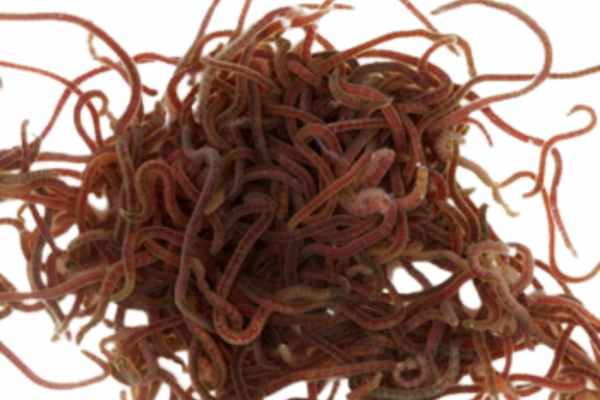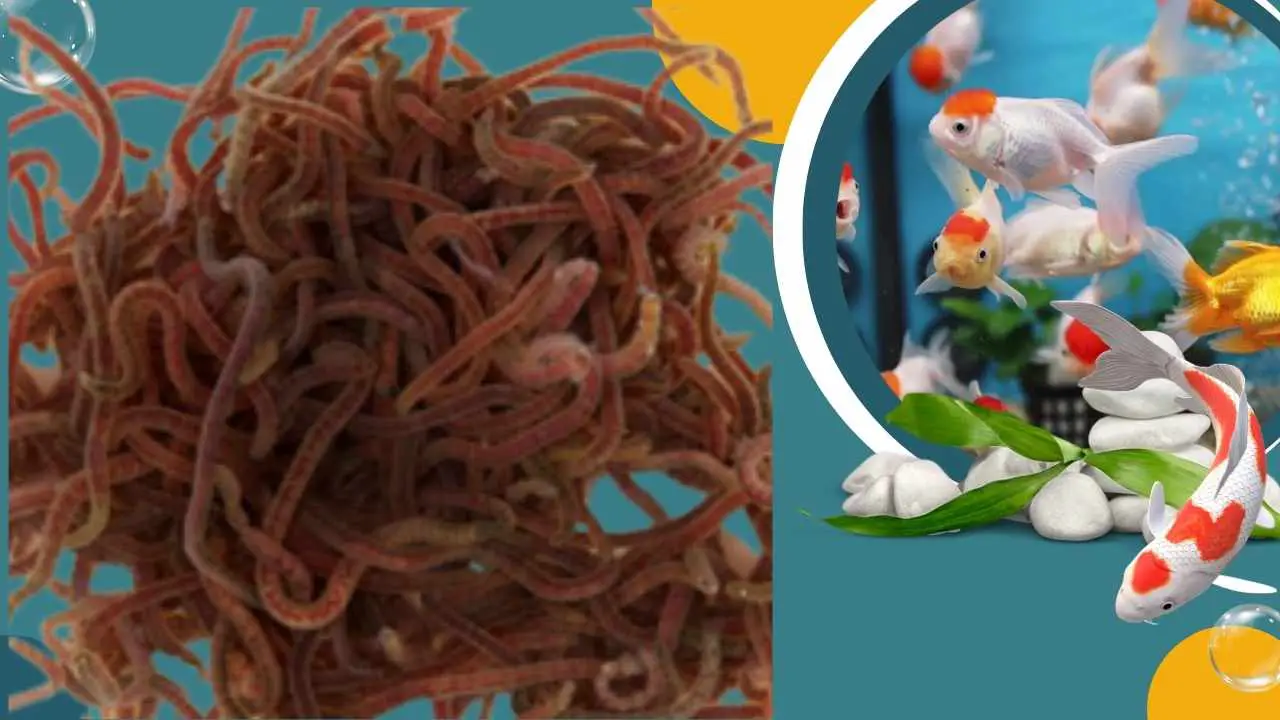Tubifex worms are also known as sludge worms, boogie worm, or sewage worm. They are a common problem in aquariums and ponds. They can be unsightly and can affect the health of the fish and other aquatic organisms in the tank or pond. These worms are known to thrive in dirty and poorly-maintained water, and can reproduce rapidly.
With the right approach, it is possible to effectively control the population of tubifex worms in your aquarium or pond and keep your aquatic life healthy and happy.
In this guide, we will discuss various methods for getting rid of tubifex worms, including maintaining clean water, using worm-eating fish, chemical treatment options, starvation method, and prevention and long-term management.
Systematic Position
Phylum: Annelida
Class: Clitellata
Order: Tubificida
Family: Naididae
Genus: Tubifex
Species: Tubifex tubifex

Controlling Methods of Tubifex Worms
Tubifex Worms can be difficult to get rid of, but there are a few steps you can take to reduce their population.
Maintaining Clean Water
Maintaining clean water is one of the most important steps in getting rid of tubifex worms. These worms thrive in dirty and poorly-maintained water, and removing any debris, such as uneaten food, that may be providing a food source for the worms can greatly reduce their population.
To maintain clean water, it’s important to regularly perform water changes, and to use a high-quality filter that is appropriate for the size of your tank or pond. The filter should be cleaned or replaced as needed to ensure that it is working properly. Besides, it is important to remove any dead plant or animal material from the tank or pond, as these can also contribute to poor water quality.
It is also good to test the water regularly to ensure that the pH and other chemical levels are within the appropriate range for the species of fish and other aquatic life that you have. If the pH or other chemical levels are not optimal, it can be difficult to control the population of tubifex worms.
Using Worm-Eating Fish
Using worm-eating fish is another effective method for getting rid of tubifex worms. Certain fish, such as loaches and certain species of catfish, will eat tubifex worms. These fish can be added to your aquarium or pond, and they will help to keep the population of worms under control.
When choosing fish to control the population of tubifex worms, it is important to consider the size of your tank or pond and the other species of fish and aquatic life that you have. Some worm-eating fish can grow quite large, and may not be suitable for smaller tanks. Besides, it is important to consider the compatibility of the worm-eating fish with the other species in the tank or pond. Some fish may be aggressive and may harm other aquatic life.
It is also important to note that worm-eating fish may not be able to completely eliminate the population of tubifex worms, and they will need to be used in conjunction with other methods, such as maintaining clean water and performing regular water changes.
Chemical Treatment Options
Chemical treatment options can be used to kill tubifex worms, but they should be used with caution, as they may also harm other aquatic life. There are several chemical options available for controlling tubifex worms, including:
- Copper Sulfate ( CuSO4): Copper sulfate is a chemical that can be added to the water to kill tubifex worms. It is toxic to fish and other aquatic life, so it should be used with caution and in accordance with the manufacturer’s instructions.
- Formalin (CH2O): Formalin is a formaldehyde-based chemical that can be used to kill tubifex worms. It is also toxic to fish and other aquatic life, so it should be used with caution and in accordance with the manufacturer’s instructions.
- Malachite Green (C23H25ClN2): Malachite green is a chemical that can be used to kill tubifex worms, but it is also toxic to fish and other aquatic life. In this case, you should use it with caution.
To control tubifex worms, chemical treatment should be used as a last resort, and it is always recommended to try other methods first. It is important to be aware of the potential risks and to follow the instructions carefully.
As a whole, chemical treatment may not completely eliminate the population of tubifex worms, and regular maintenance and other methods should be used to keep them under control.’
As a whole, chemical treatment may not completely eliminate the population of tubifex worms, and regular maintenance and other methods should be used to keep them under control.
Starvation Method
The starvation method is a method of getting rid of tubifex worms by draining the water from the tank or pond for a few days, to deprive the worms of their food source. This method can be effective in reducing the population of tubifex worms, but it should be used with caution, as it will also harm fish and other aquatic life.
When using the starvation method, it is essential to have an alternative place to house the fish and other aquatic life, such as another tank or a temporary holding container. It is also important to ensure that the alternative housing provides the appropriate conditions for the species of fish and other aquatic life that you have.
Before using this method, it is recommended to try other methods such as maintaining clean water and using worm-eating fish.
After using the starvation method, it is recommended to maintain good water quality and regular cleaning to prevent the worms from returning.
Prevention and Long-Term Management
Prevention and long-term management are crucial for effectively controlling the population of tubifex worms in your aquarium or pond. To prevent the population of tubifex worms from increasing, you should carefully follow the following steps:
• Regularly clean the water in your aquarium or pond.
• Remove any debris, such as uneaten food, that may be providing a food source for the worms.
• Test the water regularly to ensure that the pH and other chemical levels are within the appropriate range for the species of fish and other aquatic life that you have.
• Use worm-eating fish if possible.
• Regularly perform water changes.
Harmful Effects of Tubifex Worm in Aquarium
Tubifex worms can have a number of harmful effects in an aquarium. Some of the most significant effects include:
- Poor water quality: Tubifex worms thrive in dirty and poorly-maintained water, and their presence can indicate poor water quality. They can also contribute to poor water quality by releasing waste products into the water.
- Disease transmission: Tubifex worms can carry and transmit diseases to fish and other aquatic life. They can act as vectors for bacterial, viral and parasitic infections.
- Fish health issues: Fish that are exposed to high levels of tubifex worms may develop health issues such as skin irritation, infection, and even death.
- Unsightly appearance: Tubifex worms can be unsightly, and their presence in an aquarium can be unappealing to some fish keepers.
- Reduced oxygen levels: High populations of tubifex worms can consume large amounts of oxygen in the water which can lead to decreased oxygen levels for fish and other aquatic life.
- Competition for food: Tubifex worms consume large amounts of food, which can lead to competition for food between them and other aquatic life.
Overall, tubifex worms can have a significant negative impact on the health and appearance of an aquarium, and it is important to take steps to control their population to maintain a healthy ecosystem.
Concluding Remarks
In conclusion, tubifex worms, are a common problem in aquariums and ponds. They thrive in dirty and poorly-maintained water and can reproduce rapidly, which can lead to an infestation. Tubifex worms have lots of harmful effects in aquarium including poor water quality, disease transmission, fish health issues, unsightly appearance, reduced oxygen levels, and competition for food. It is important to be aware of these effects and take steps to control their population to maintain a healthy ecosystem. In this case, you should maintain proper water quality and regular cleaning the tank to prevent the worms from returning.

